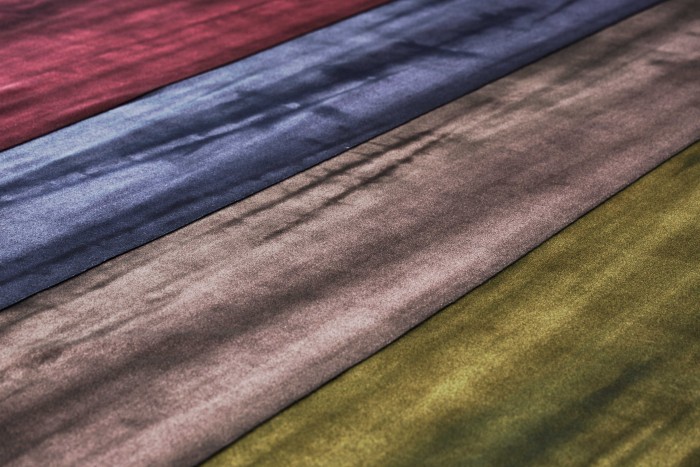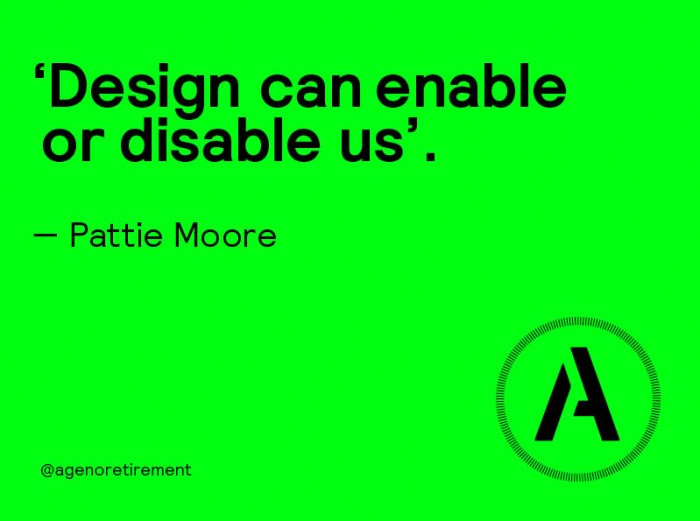The Age of No Retirement collaboration Q&A with Tina Profit, Camira.
Design Insider caught up with Camira’s Healthcare Product Manager, Tina Profit to discuss their collaboration with forward thinking design organisation ‘The Age of No Retirement’ who bring together some of the best creative minds in Britain to help organisations realise the social and economic value of all-age thinking.

What’s behind your collaboration with The Age of No Retirement?
We were hugely inspired by The Age of No Retirement and their work to challenge ageism in our society. The design-led movement found that healthcare was one of the worst sectors when breaking down age barriers in design, preferring to focus on function rather than form and user experience. We were keen to learn more and educate our sector about the current state of generational divide and the benefits of embracing new thinking around intergenerational design that embraces a more human approach.
How does Camira design fabric with The Age of No Retirement principles in mind?
The Age of No Retirement recognizes that when we design well, we feel empowered. Camira Fabrics have to consider very specific functions such as protection from infection, waterproof and stain repellent technology, and safety standards such as flame retardant compliance. Although we design with these necessary functions in mind we don’t compromise comfort or user experience.

We design with thought and care and really consider the human aspect, how will the fabric look? How will it feel? How will people respond and interact with it? Will it contribute to a cosy and safe environment, or improve a sense of wellbeing. Functionality is paramount but the aesthetics equally so.
What do you believe to be the most important thing when designing for a healthcare environment?
‘Delightful’ is a word The Age of No Retirement use, it is one of their 10 guiding principles of intergenerational design. For us this word perfectly sums up our belief and own principles of working, which are to put the end-users at the heart of our designs to create happy spaces and pleasing places that are enjoyable and beautiful.
From a designer’s viewpoint, what do you think are the biggest challenges the world shares across all ages?
Definitely designing with sustainability and performance in mind. We’re living longer yet we’re all educated to live in a throwaway society. Ultimately there is no future in simply feeding the throwaway consumer. We pay particular attention to function and form choosing colours and patterns carefully to induce wellbeing but the end product has to be designed and manufactured with sustainability in mind.

As designers what can we learn from people who are older and how do you feel this knowledge can inform our decision making?
The older generation have tried it; they’ve done it and have learnt through experience. There is real merit in taking their lead; we’re all too quick to jump on the latest thing, too expectant for things to be instant. The real lesson is in observing and evolving without narrowing our minds through negative experiences. Sometimes there is worth in reigniting something that historically didn’t work.
As designers what can we learn from people who are younger and how do you feel this knowledge can inform our decision making?
What I love about younger people is they don’t have any limits. The word ‘can’t’ doesn’t exist, they are much more open to ideas, new technology and change. This approach can present things we would never have readily thought of. We mustn’t loose that playfulness and need to explore; sometimes breaking from convention and keeping an open mind can be a good thing.
How do you think we should change how we view and think about age when we are designing?
I’m going to quote the co-founder of The Age of No Retirement George Lee, she said “If you design an environment which tells a story of illness and decline then as human beings we will start to feel this narrative, which does nothing to help our wellbeing. We need to see that design has the power to make us feel more connected, more in control, more human, happier and increase our wellbeing.” I really couldn’t have put it better myself.
Do you think Camira’s healthcare fabrics are contributing to the movement of removing the age stereotype, specifically as people get older and are moving into care homes?
Absolutely. When designing our Healthcare range we deliberately wanted to move away from what everyone else was doing, we wanted to create improved fabrics in the sector without assuming what older people do and don’t like. Our design team benefits from a broad age range yet together design by being open to what is going on in the world, taking inspiration from many sources without defining age but simply asking the question ‘Does this make me feel good’.





